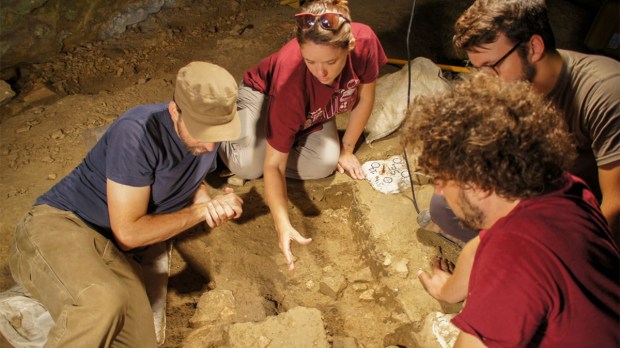They called her Neve (“Snow” in Italian) and she lived 10,000 years ago for just 40 days.
The little bundle was discovered in a cave in Liguria (northwestern Italy) and is the oldest burial of a newborn girl discovered so far in Europe.
And that’s not all. Her burial has left scholars amazed; the child was, in fact, wrapped in a shroud including seashell jewelry. More precisely, her bones (only a few survived the millennia) were found surrounded by more than 60 beads made of pierced seashells; four pendants, also made from pierced fragments of bivalves; and an eagle-owl talon.
Someone went to great lengths to bury this child with all due care.
The first traces of this discovery date back to 2017, but only in recent days have scholars documented this sensational find. It leaves us a testimony not only of the thoughtfulness with which Mesolithic man treated the dead, but also of the dignity of personhood that was given to newborns.
Stefano Benazzi, professor at the Department of Cultural Heritage at the University of Bologna and one of the leading researchers involved, explains to Italian news outlet Il Secolo XIX:
This discovery allows us to investigate an exceptional funerary rite from the early Mesolithic phase, an era of which few burials are known, and testifies to how all members of the community, even newborns, were recognized as full persons and apparently enjoyed egalitarian treatment.
A newborn girl in a cave in Liguria
Arma Veirana is a cave in Liguria, a coastal Mediterranean region in northwestern Italy that ends on the French-Italian border. The cave has been known for a long time to the inhabitants of the surrounding area, Val Neva, named for the Neva river (which inspired the name given to the newborn girl). It’s located relatively far from the coast and is not easily accessible, so it has never been the object of planned archaeological investigations.
However, this cave, which is about 40 meters deep and has a curious tent-shaped entrance, has been explored by an international team under Italian direction, which brought to light this incredible discovery.
The chronicle of this exceptional discovery makes us take a step beyond archaeology. Our ancestors left us a thoughtful message: even the smallest and most fragile life should be cared for attentively. The great value of this small person is testified by the devotion and care given to her, even in her burial.
This happened 10,000 years ago, during “a period that probably marked great social changes in human populations, linked to the adaptations due to the end of the last ice age,” according to Il Secolo XIX.
Funerary customs are an unequivocal indication of what people think of life, of the mystery of being. Faced with a small dead child, they took the greatest care to make her beautiful and adorned in her tomb in a cave.
Small signs of life
The work to unearth Neve’s remains was painstakingly done with tiny instruments borrowed from dentists. The little body of the newborn had to be carefully unearthed. What did the studies on her body reveal? According to Rai News:
Analyses indicate that at the time of death, Neve was between 40 and 50 days old, that her mother ate meat and that perhaps due to some physiological stress, the growth of the fetus’ teeth had stopped a month or two before birth.
She lived a very short time, and probably already had problems before birth. Yet, after 10,000 years she’s still before our eyes, telling us something. If we make ourselves small, we can look at Neve and realize that every child is a gift. Life begins as something small and fragile. It’s up to us to protect it and love it.
Progress?
The beads and charms that adorned the little girl’s body are also a paradoxical sign. Not all of history falls into the pattern of constant progress. It’s not necessarily the case that the past has been surpassed by something better in the present.

